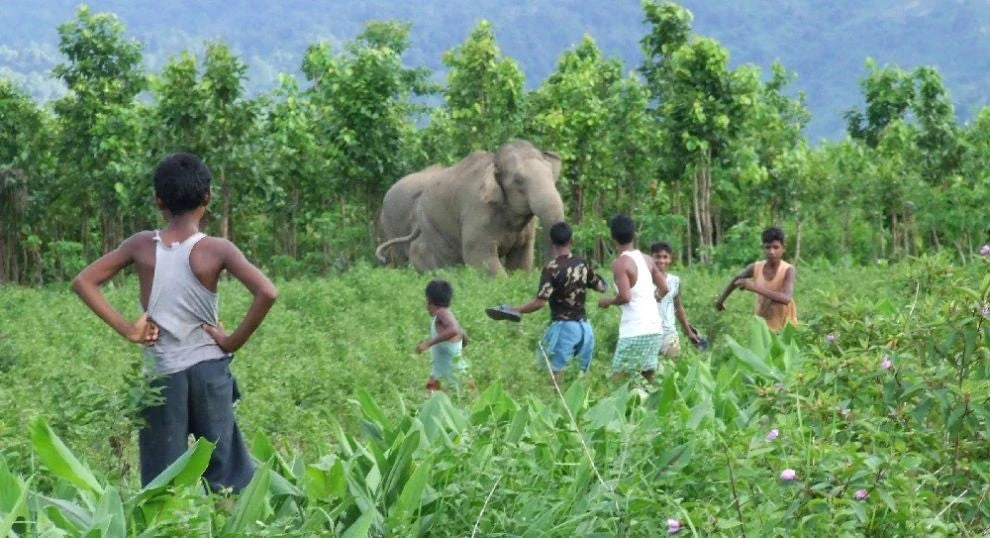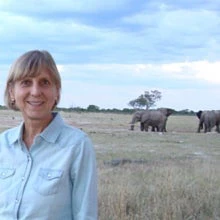
In extreme conditions, a human can survive three minutes without air, three days without water, and three weeks without food. To support a global population that has grown to 7.5 billion, the demand for these essential natural resources is increasing, leading to deforestation, habitat degradation and fragmentation, overgrazing, and over exploitation.
In the quest to survive and thrive, humans have already converted 38% of the world's land area for farming; in addition, we have deforested land for industry, mining and infrastructure, leaving less than 15% of the world's land area as terrestrial protected areas for biodiversity conservation. If there is so much human pressure on protected areas, where can the remaining populations of elephants, big cats, and other wildlife go in search of their own food and water? A rich maize harvest, an unprotected paddy field or a well-fed cow in the surrounding landscape would (understandably) seem irresistible. This conflict over natural resources, especially land and water, is the root cause of human-wildlife conflict.
The majority of human-wildlife conflict (HWC) incidents occur around the edges of protected areas and it is the local communities who bear the cost of crop loss, livestock predation, human injury and sometimes, even death.
HWC is a global issue. To explore what works and what doesn’t, the Government of Gabon in collaboration with the Global Wildlife Program (GWP) hosted a conference on “Reducing human wildlife conflict and enhancing coexistence” in April 2017 in Gabon.
Led by the World Bank and funded by the Global Environment Facility (GEF), the GWP works across 19 countries in Asia and Africa to support actions on the ground to improve wildlife and protected area management, enhance community livelihood benefits, strengthen law enforcement and reduce demand.
The conference brought together nearly 80 participants from over 20 countries, and the discussion on some of the key issues and possible solutions are described below.
What can we do to reduce human-wildlife conflict?
Prevent the situation from occurring. Although the ideal solution, it is very difficult to implement. It includes:
- Landscape Planning: protected areas are home to wildlife and land-use change around protected areas fragments and degrades their habitat. Before planning any development project, it is essential to understand the type of land-use change(s), the behavior of wildlife and the resulting migratory patterns. This will help predict where HWC incidents might occur, providing the opportunity to effectively zone the area and create wildlife corridors that link conservation to landscape planning.
- For communities adversely impacted by HWC, it is important to generate a wildlife-based economy to ensure the benefits from wildlife outweigh the costs associated with living among them. A big male elephant that tourists can come and see over its lifespan will generate more money and more benefit for people and the nation. When wildlife management is seen as an asset, protected areas become a competitive land use.
Minimize and mitigate the impact of the conflict on both humans and wildlife. Reducing HWC impacts may not necessarily reduce the conflict if the underlying causes are not addressed. Therefore, understanding the social, political and cultural aspect of the community dealing with the issue is pivotal to success. As governments continue to face the resentment of local communities, it is imperative that decision makers realize that solutions to keep the ‘problem’ animal(s) away, is just a band aid; working with the people and strengthening their ability to manage resources is the prescription for the cure.
Finally, if the damage is done, the safest approach to mitigate the impact of conflict would be to provide compensation or insurance to cover any economic loss. This is a common solution, however it is hard to implement justly and does not solve the core problem or change the negative perception of the community towards wildlife. The better approach would be to provide benefits to communities (monetary and non-monetary) that are linked to positive conservation outcomes. These are known as “Payments for Enhancing Coexistence,” and they achieve a dual purpose of promoting biodiversity conservation and alleviating poverty.
Wildlife and their habitats have many social and economic values that generate tourism revenues, support job creation and provide community livelihoods. Wildlife gives us a reason to preserve and protect forests. Without forests there will be no water or the ecosystem services that we all depend upon.
As a global community, we need to contribute towards wildlife conservation and promote community-based natural resource management. The path to reducing human-wildlife conflict lies in the acceptance of interdependence – we need to coexist if we want to survive.
Learn more about the causes and solutions for human-wildlife conflict from experts, and from a farmer, Madame Mabara Flavienne, who is benefitting from an electric fence to keep forest elephants from destroying her crops, in our video on HWC produced in La Lopé National Park in Gabon.



Join the Conversation